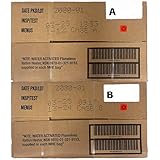Top 4 Semantic Keyword Phrases
- Disaster Preparedness Tips
- Evacuation Route Planning
- Emergency Supplies Checklist
- Communication Plan for Families
Disaster Preparedness Tips
Alright, let’s kick things off with the basics of disaster preparedness. Trust me, folks, having a solid plan is crucial. The first thing you want to do is get informed. What kinds of disasters are common in your area? Earthquakes, tornadoes, floods? Knowing what you’re up against is half the battle.
Once you have a handle on the types of potential disasters, it’s essential to have a family meeting. Gather everyone together and talk about the different scenarios and your escape plan. Make sure everyone knows where to go and what to do. Clarity here can save lives.
Lastly, practice, practice, practice! Just like fire drills in school, you should run through your disaster plan a few times each year. This way, when something does happen, you won’t be scrambling around like a headless chicken, trying to remember what to do.
Evacuation Route Planning
Now, let’s dive into evacuation route planning. This part requires a bit more legwork but is absolutely worth it. Start by mapping out multiple escape routes. You don’t want to rely on just one route because what if it’s blocked? So, have a plan A, B, and C.
Make sure your routes are easily accessible. You don’t want to be climbing over fences or getting stuck in traffic. Check them out in different conditions – daytime, nighttime, rain, etc. The more familiar you are with these routes, the better prepared you’ll be.
And here’s a little tip – keep a printed copy of your evacuation routes in a safe but easily accessible place. Sure, we all love our smartphones, but batteries die and signals fade. A good old-fashioned paper map can be a lifesaver.
Emergency Supplies Checklist
Alright, let’s talk supplies. You’ll need an emergency supplies checklist to make sure you’ve got everything you need. Start with the basics – food, water, and medicine. You need enough to last at least 72 hours. Trust me, you don’t want to be fighting for a can of beans at the last minute.
Next up, consider your specific needs. Do you have pets? Small kids? Anyone with special medical requirements? Make sure you’re packing for everyone in your household. Forgetting Fido’s dog food can cause unnecessary stress during an already stressful time.
== > What if ... Get a FREE Subscription to PREPARE
Lastly, don’t forget about important documents. Birth certificates, insurance papers, IDs, and so forth. Keep them in a waterproof bag. You don’t want them getting ruined if you’re trudging through a flooded area or caught in a storm.
Communication Plan for Families
Having a solid communication plan is critical. In a disaster, cell towers might be down, and you need a way to reach everyone. Start by designating an out-of-town contact that everyone can check in with. This person can relay information and provide support from a distance.
You should also have a family meeting place – both a local and a distant one. The local spot should be close to home, while the distant location can be somewhere far enough away from the disaster area. Everyone needs to know these spots like the back of their hand.
Lastly, make a list of emergency contacts and keep it on everyone’s person. This list should include home numbers, work numbers, and school numbers. Teach your kids how to use this list. They need to know who to call if they can’t reach you or if they get separated.
FAQs
1. How often should we practice our evacuation plan?
I recommend practicing your evacuation plan at least twice a year. You can do it more often if you like, but twice should be the bare minimum to keep everyone on their toes.
2. What should go in our emergency supply kit?
Your emergency supply kit should include food, water, medical supplies, important documents, and any special items needed for pets or family members with unique needs. Plan for at least 72 hours of self-sufficiency.
3. How can I ensure my communication plan works during a disaster?
It’s essential to have both local and out-of-town contacts and designated meeting places. Use a combination of communication methods – phone calls, texts, and even social media can come in handy. Preparing a list of emergency contacts for everyone to carry is also a must.
4. What if a disaster strikes while I’m at work or my kids are at school?
This is why having a well-thought-out plan is crucial. Make sure your kids’ schools have your updated contact information and know the school’s emergency procedures. For work, make sure you know the evacuation routes and procedures in place. Always have a plan for reunification after a disaster.






